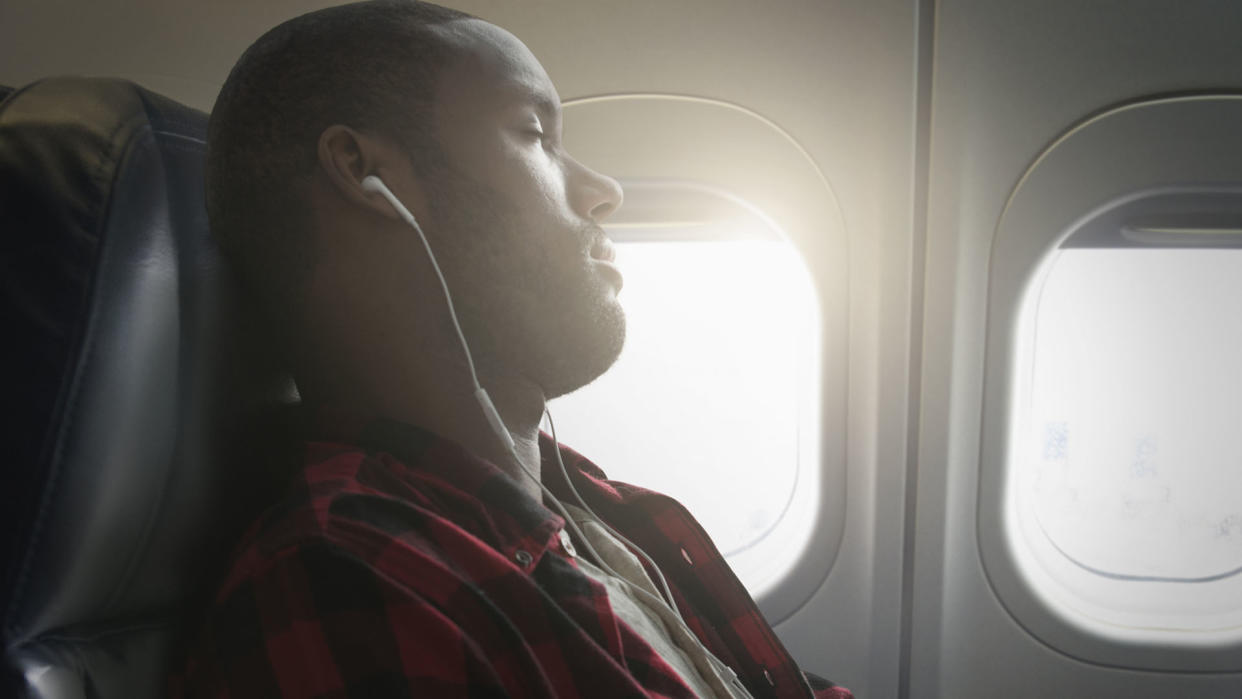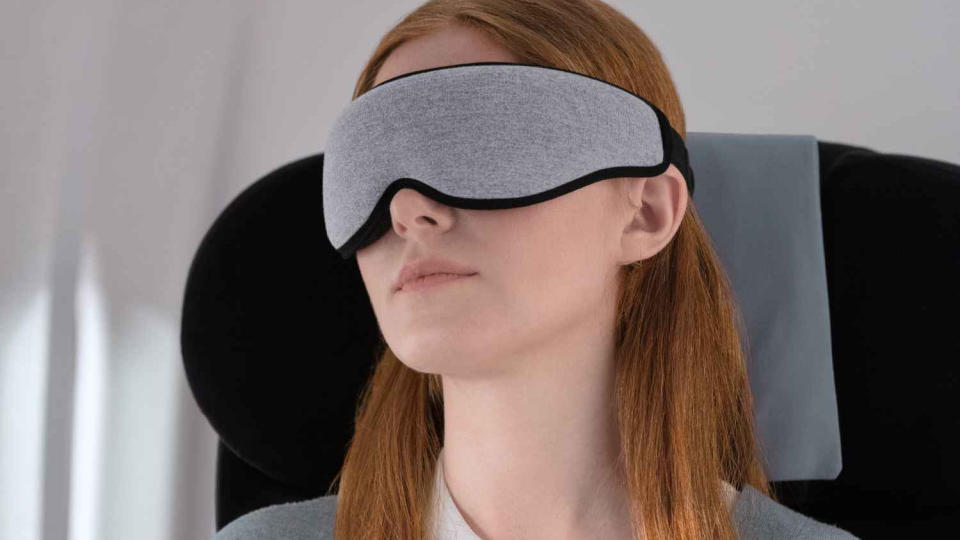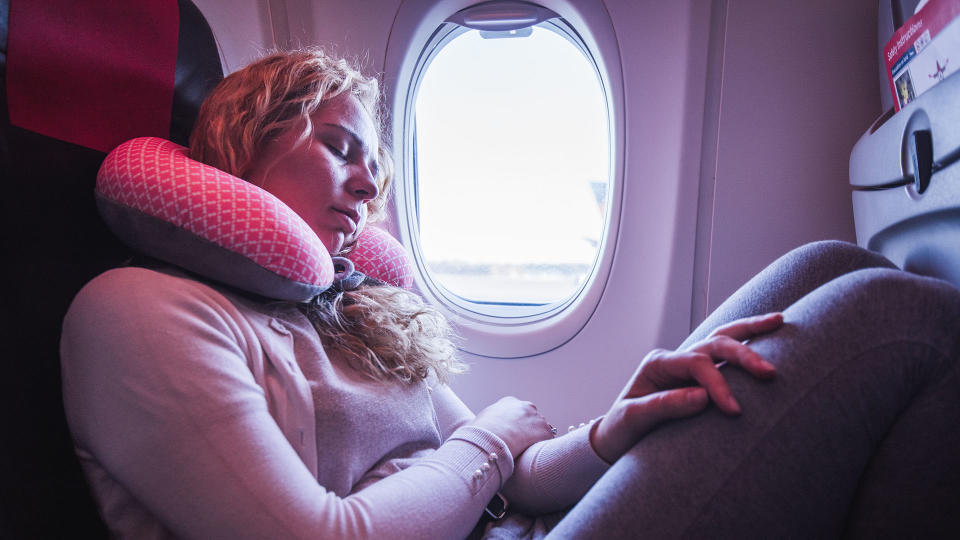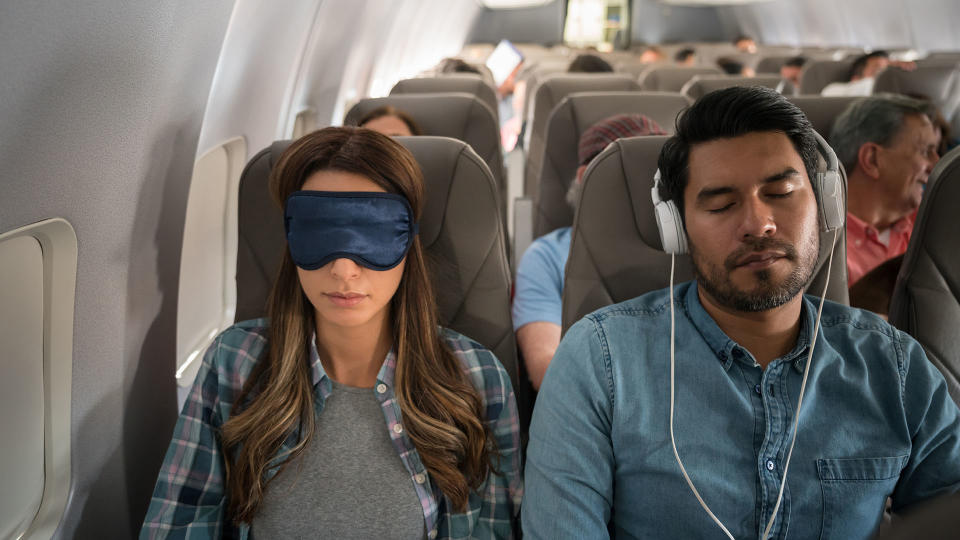10 tips to help you sleep better on a plane

These days, flying long haul isn't the chore it once was. Typically, you'll get lots of free drinks, decent food and a vast array of in-flight entertainment. However, if it's morning when you arrive at your destination, you'll want to spend at least some of your time in the air asleep. After all, arriving in an unfamiliar destination and suffering grogginess and disorientation of jet lag is no one's idea of fun.
In practical terms, though, sleeping on a plane is about as far from a proper nights' sleep on the best mattress as you could imagine. Most of us are, quite frankly, no good at sleeping while sitting up. Add that to endless distractions such as seat alarms, crying babies, passenger conversations, flight attendants, turbulence and altitude sickness, and getting some decent shut-eye starts to look like a very difficult task indeed.
But don't worry: there are a number of tried-and-tested strategies you can employ to help you sink off to the land of nod. We list our 10 best tips in the article below.
Had a great night's sleep during your travels, and want to replicate the experience at home? Then check out our article on what mattresses hotels use
1. Layer up
One of the reasons people find it difficult to sleep on a plane is that they're either too warm or too cold. The optimal temperature for sleeping is 60-67°F, but in practice the temperature on planes can fluctuate a lot. So it's worth spending some time preparing for all eventualities, by dressing in layers.
That way, if you're too warm, you can peel off clothes bit by bit until you're at the perfect temperature. If you're too cold, add some back on (or ask the flight attendants for a blanket or blankets to warm you up). Alternatively, if you tend to find airline blankets uncomfortable or too small, consider bringing your own.
2. Choose your seat tactically
If you can choose your seat then take full advantage, says Andrew Hayward, former airliner executive and director at Panache Cruises. "Sit in seats where you will not get disturbed," he advises. "Window seats are good and provide a side head rest in economy. Seats near the toilets are bad, as people will often queue next to you and bang your chair as they walk past."
He also recommends sitting nearer the front of the plane if you can. "As a general rule the freshest air enters the cabin at the nose to keep the pilots alert," he explains. "And check Seat Guru to find out what the best seats are. Many, for instance, will have inflight entertainment hardware in boxes under the seats – usually aisle and window seats – and this can have an impact on legroom."
3. Don a sleep mask
It can be tricky sleeping on planes is when the cabin lights are on full. So it can help to block them out by wearing a sleep mask, aka an eye mask. This will put you in darkness, which stimulates the production of melatonin, a hormone that encourages sleep. It'll also block out visual distractions that might otherwise prevent you from nodding off, from the movements of flight attendants to the rapidly changing colors on fellow passengers' TV screens.
Our Sleep Editor's top pick is the Ostrichpillow eye mask (pictured below), which worked a treat on a recent long-haul trip. The molded eye cups to block out light completely without pressing on your eyelids.

4. Uncross your legs
Do you naturally cross your legs when you're seated? Then make sure you uncross them when you're trying to sleep. That's because leg-crossing puts pressure on the veins, restricting your blood flow. And not only does this make it more difficult to fall asleep, it can also increase the chances of blood clots. So it's much better to sit with your legs straight or with a slight bend.
5. Pop on some flight socks
Flight socks apply graduated compression to the legs to improve circulation, which helps you sleep and reduces the risk of blood clots. For that reason, it's especially important to wear flight socks if you're pregnant, have recently had surgery, or are on medication. More broadly, the mere action of changing your day socks to flight socks is a good way to get you in the right mindset for sleep.
6. Use a travel pillow
Neck pillows may look a bit silly, but by keeping your head in a comfortable position, they really can help you sleep better on planes. Plus, you're less likely to suffer neck pain and stiffness while you sleep, so you'll wake up feeling refreshed rather than sore and miserable.

7. Wear earplugs
Just as a sleep mask can block out visual distractions, earplugs can limit audio distractions and thus aid sleep. It's best to bring more than one pair on the flight, in case they fall out and you have to hunt around on the floor for them.
There are many different types of earplugs, including foam, wax and silicon, so it's best to try out a few pairs and discover what kind works best for you, before you fly. Also make sure they fit snugly in your ears, but not too tightly. If they're too loose, they won't block out noise effectively, but if they're too tight, they'll be uncomfortable to wear over a long-haul flight.
8. Listen to white noise
If you don't like earplugs, then a better way to drown out aural distractions might be to listen to white noise through noise-cancelling headphones. White noise is a sound that contains all frequencies of sound at equal intensity, and sounds a bit like a whirring fan or air conditioner. While that might not sound pleasant, a lot of people find it a great way to switch off. Learn more in our article how does white noise help you sleep?.

9. Choose the best plane!
Ultimately, the best way to sleep on a plane is to upgrade to economy plus, business class or first class... but most of us don't have that kind of money. What you might consider, though, is spending a little more to fly at a time of day or night that's more conducive to sleep.
We're moving into pro technique territory here, but if you're a frequent flier, you might also want to consider the airline you're flying with. For example, Emirates have a reputation for offering economy class seats with more legroom than most, while Singapore Airlines are renowned for economy class seats with a wider seat pitch. However, don't assume these generalizations hold true for every flight and route. For example, in 2019 my hugely comfortable Emirates flight from London to Turkey was very different from the connecting flight onto Iran, which was much more basic.
Before you book, it's also worth paying attention to the specific plane you'll be on. "Aircraft type can make a huge difference," says Hayward. "Opt to fly on Boeing 787 Dreamliners or Airbus A350s if you can, as their cabins are pressurized to much lower altitudes – 6,000 feet as opposed to 8,000 feet – and this has a massive impact on sleep and jet lag."
10. Avoid alcohol and coffee
It's difficult enough to sleep on planes without stuffing your body with artificial stimulants. So even though it's nice to be offered free drinks on your flight, you should always avoid alcohol and coffee if you're trying to get to sleep. Not only will they stop you sleeping on the plane, but they may stay in your system for hours after your flight, keeping you awake and exacerbating jet lag. That said, it's important to stay hydrated, because the air on an aircraft is particularly dry. For this reason, the Aerospace Medical Association (AsMA) recommends drinking about 8oz (250ml) of water for every hour you're on a flight.

